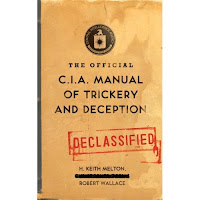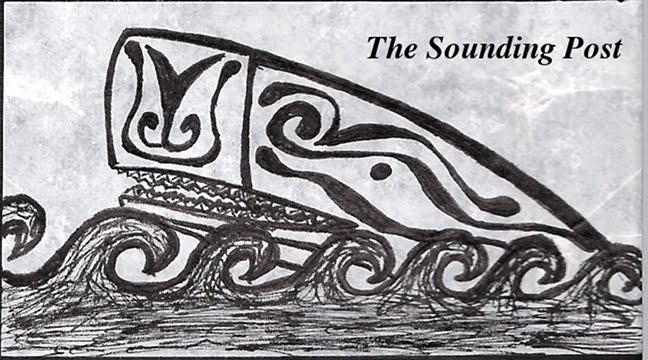 or
orFurther Proof Espionage is Cool
(First check out the CIA's online museum - it's only a fraction of their actual museum, most of which is apparently still classified and only accessible by agents, but it's still very cool)
I'm currently reading a book by H. Keith Melton and Robert Wallace titled "The Official CIA Manual of Trickery and Deception." If the title seems a little far-fetched to you, that's because the CIA's program of the 50's and 60's, MKULTRA, was far-fetched - the book features the most complete copy of "The Official CIA Manual of Trickery and Deception", written by world-renowned magician John Mulholland.
I got this book thinking it was an exact copy of the original documents - turns out that is only part of it. Firstly, nobody knows (at least, nobody PUBLICLY knows) how many treatises and guides Mulholland wrote for the CIA, and all that seems to have survived when most MKULTRA documents were ordered burned in the 1970's were two; "Some Operational Applications of the Art of Deception," and "Recognition Signals," both from the early 1950's. Mulholland continued working with the CIA for several more years, but there is no evidence, either from government sources or Mulholland's own notes and documents, that he wrote anything else for their use.
But the book isn't only a publication of these recently found and declassified documents (they were lost in desks for nearly 40 years) - it is also a highly researched book on the art and tools of deception used by OSS, CIA, and KBG agents during the cold war. Roughly half the pages are devoted to Melton and Wallace's well documented history of how secret agents avoided detection, relayed materials, and kept their secrets in a highly scrutinized and dangerous climate.
I did not know that the book would feature anything of this sort - and I am pleasantly surprised. Having read about and researched some specific covert agents and operations, I always found the minutia of the spy game incredibly interesting. But the thing about books and essays on people and events are that they often devolve into character studies of the people involved. That's not a bad thing, if you're doing history papers (which I was at the time), but the reason I first became interested in these events was because of characters like Q from the Bond series - I wanted to see the stealth devices and tactics that seemed to surround the spies.
The more I researched for these history papers and for my own curiosity, the less it seemed like spies used such devices regularly - that's why I am enjoying Melton and Wallace's book so much. It is teeming with Bond-like devices and anecdotes of their usage in actual cases. The manual itself is more like a practical guide to magic, and is interesting on it's own as both a guide to amateur magicianship and a unusual piece of history, but the real value in this book is the first half's history of deception and spies.
I would highly recommend it to anyone, especially kids like me, who grew up watching Sean Connery's bond, while also building our own repertoire of amateur magic tricks on the side (I still have all my books, coins and cards).





No comments:
Post a Comment